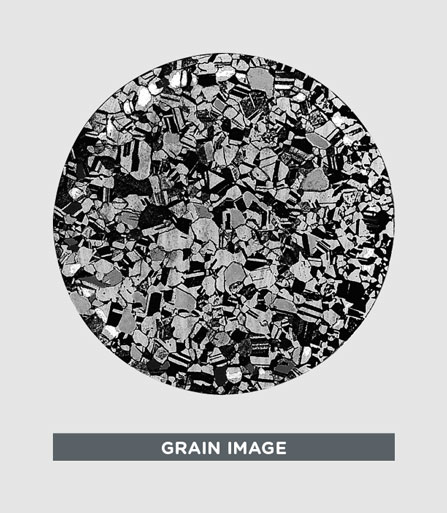Solid metallic materials are crystalline  in structure. The element atoms, bound together to make the bulk material, are arranged in a regular, repeating three-dimensional array. Copper alloys, as are most metals, are polycrystalline.
in structure. The element atoms, bound together to make the bulk material, are arranged in a regular, repeating three-dimensional array. Copper alloys, as are most metals, are polycrystalline.
They are composed of aggregations of crystals joined at boundaries. Aggregations of unit crystals are termed Grains and the boundaries between them are the Grain Boundaries.
Grain Size is controlled by the annealing process. The metal is heated to a temperature above its recrystallization temperature. At this temperature the atoms in the cold work distorted crystalline structure use the cold work energy stored in the crystal lattice plus energy absorbed from heating to nucleate into new orderly crystalline patterns. These new grains are then capable of absorbing new amounts of cold work. The size of the new grain depends on the annealing temperature, the time at temperature, the preceding amount of cold work and the grain size from the preceding anneal. Grain size measurement is predicated on the assumption that in fully annealed wrought metal the grain morphology is equiaxed; the apparent size of each grain is essentially the same for any axis of measurement. In reality, a metal structure is an aggregate of grains varying in size and shape. The grain size is an estimate of the average size and is reported in millimeters. (See ASTM E112.)
Considerations of Grain Size
Strength:
Fine grains produce wire of lower elongation and higher mechanical properties.
Directionality:
Grain directionality occurs when metal is cold worked in one direction between anneals. Directionality (Good Way Bends) can be minimized by fine grain size.
Formability:
Grain boundaries impede plastic flow. The larger the grain size, the fewer the grain boundaries and the greater the potential for deformation.
Surface Appearance:
Slip within a grain’s lattice structure resulting from cold work causes surface roughness (orange peel). The finer the grain size, the smoother the cold worked surface.
